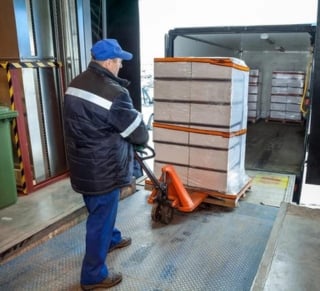When discussing the health and safety of your workforce, one adage reigns true:
“A claim prevented is the best way forward,” says Bob Patterson, a Briotix founder.
Once an injury has happened, responsibility for handling that issue shifts to the worker’s compensation department. As many will attest, this is where things get expensive.
Before it gets this far, there is a way to stop claims in their tracks and create a happier, healthier, and more accident-free workforce.

Injuries don’t just appear out of nowhere, says Julie Landis, vice president of business development at Briotix.
“You are almost always going to get warning signs before you cross over into that injury or diagnosis category,” she says.
Someone with the right training and experience can recognize these warning signs and stop them from growing into a full-blown injury. That someone is an onsite prevention specialist.
“What the prevention specialists are doing is trying to maximize the health and wellbeing of employees and prevent them from crossing over into the injury category,” Landis says.
An onsite prevention specialist is one of the of the most effective prevention tools available to a company, especially when you consider how rapidly a small discomfort can turn into a massive worker’s compensation nightmare.
“On a scale of zero to ten, if you’re a level five today, we do not want you to be an eight a week from now,” Landis explains. “We want you to be a three or a two.”
In an effort to mitigate potential claims, the prevention specialist tackles prevention from a variety of different angles. One approach to prevention is risk assessment.
“The prevention specialists are working to identify risk in work environments,” Landis says. “This could be risky tasks that employees are doing or even risk that is built into the work space. The prevention specialist will ask, ‘Is there a better way we could set up this space to minimize risk?’”
Additionally, prevention specialists spend a lot of time getting to know employees as individuals and as a group. This helps them to identify risk factors that are embedded in the community and tackle those with prevention programs.
“They are working to figure out the health of the population or an individual so if they need to promote certain wellness programs, they can do that,” Landis says.
For example, if the prevention specialist notices multiple employees using an awkward posture for lifting, they might choose to plan and execute a group training on appropriate lift techniques.
Another approach that a prevention specialist might take is called “job coaching.” In this approach, the prevention specialist would provide hands-on training to an individual employee during their work shift.
“They work with the employees to kindly correct risky movement or change risky behaviors,” Landis says.
Job coaching, program development, and risk management are all important and highly effective benefits of hiring a prevention specialist, but perhaps the most valuable thing they can provide is a supportive presence for your staff.
“The prevention specialist offers advice and acts as a point of contact so that when the employees have early discomfort, they don’t need to sit and let it stew,” Landis says.
When there is a team member specifically associated with health and wellness, your staff might be more likely to seek help with their small aches and pains—thus potentially avoiding a future claim.
This is by no means an exhaustive list of the contributions a prevention specialist can make to a company. Placing a prevention-focused individual into your company’s work environment can have a variety of positive effects and greatly improve overall company health.
Wonder how Briotix might help your organization? Contact us for a customized solution.